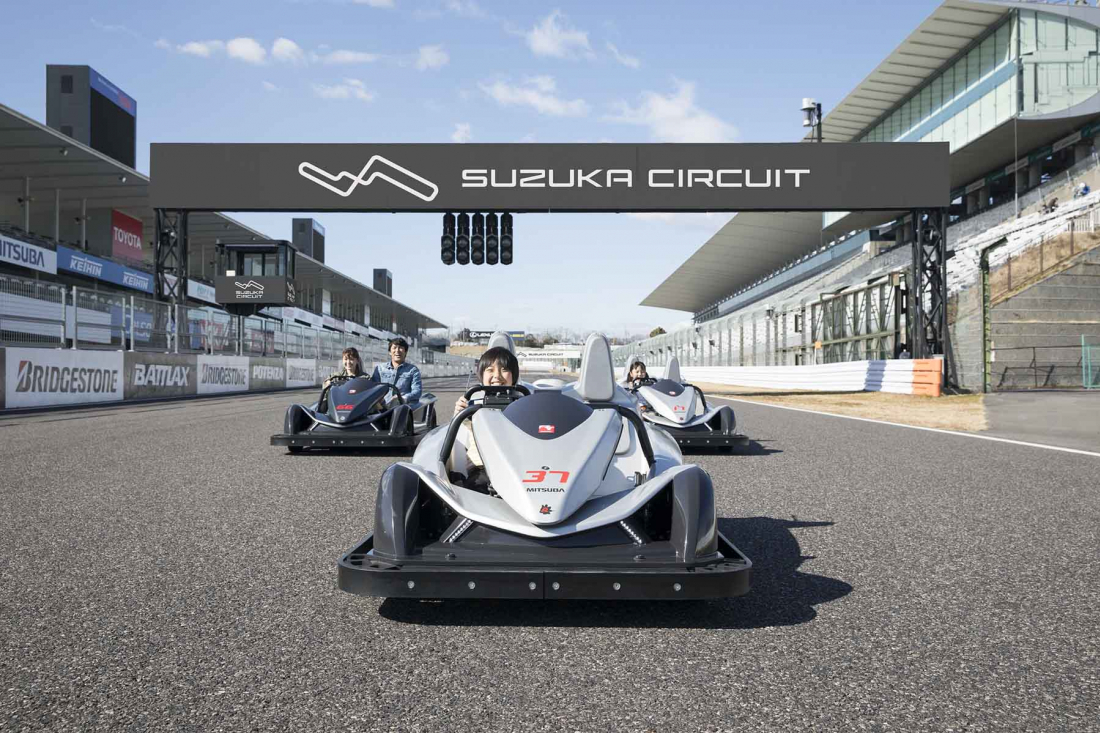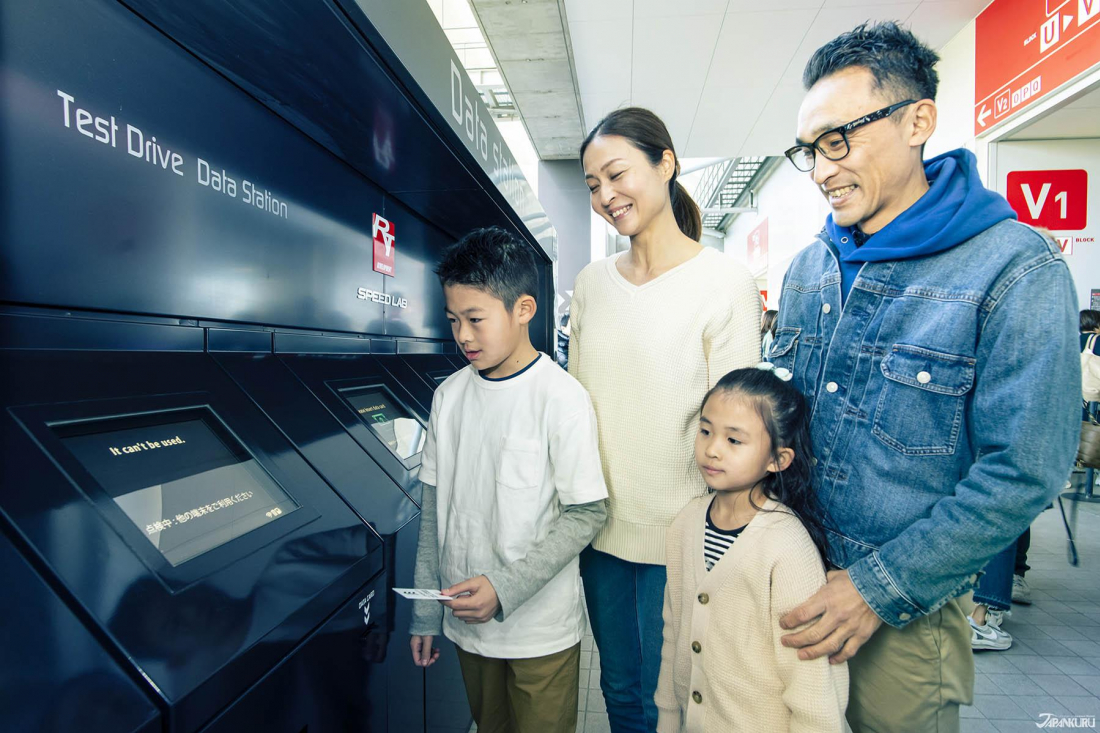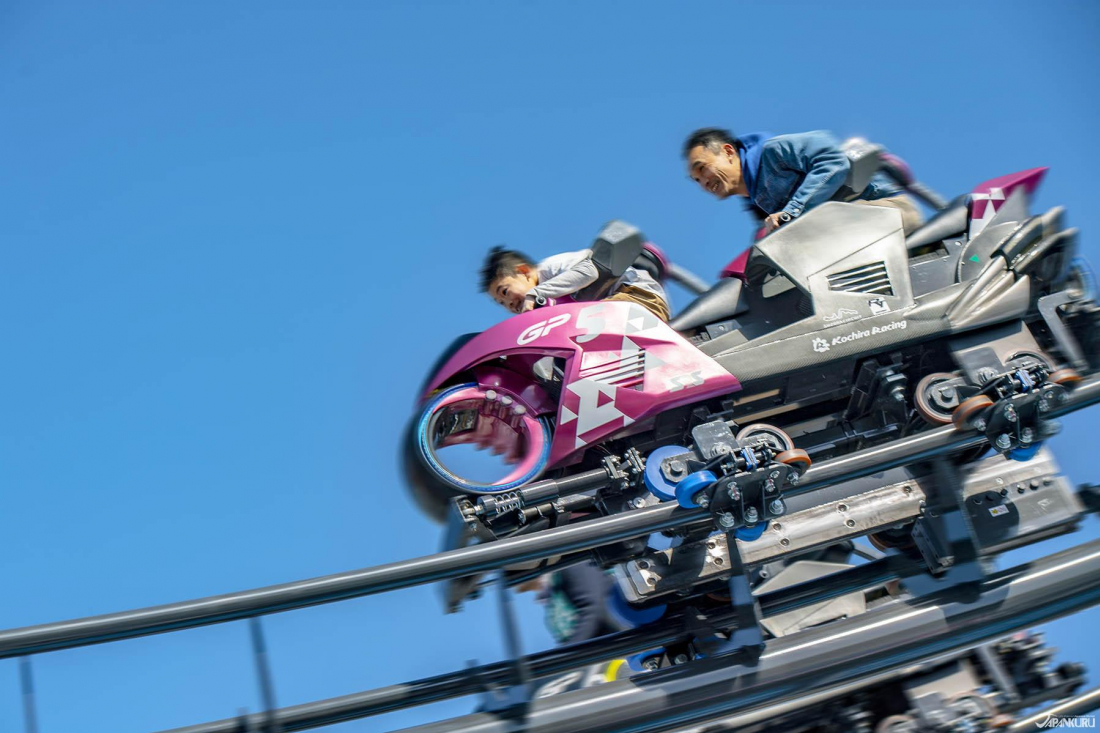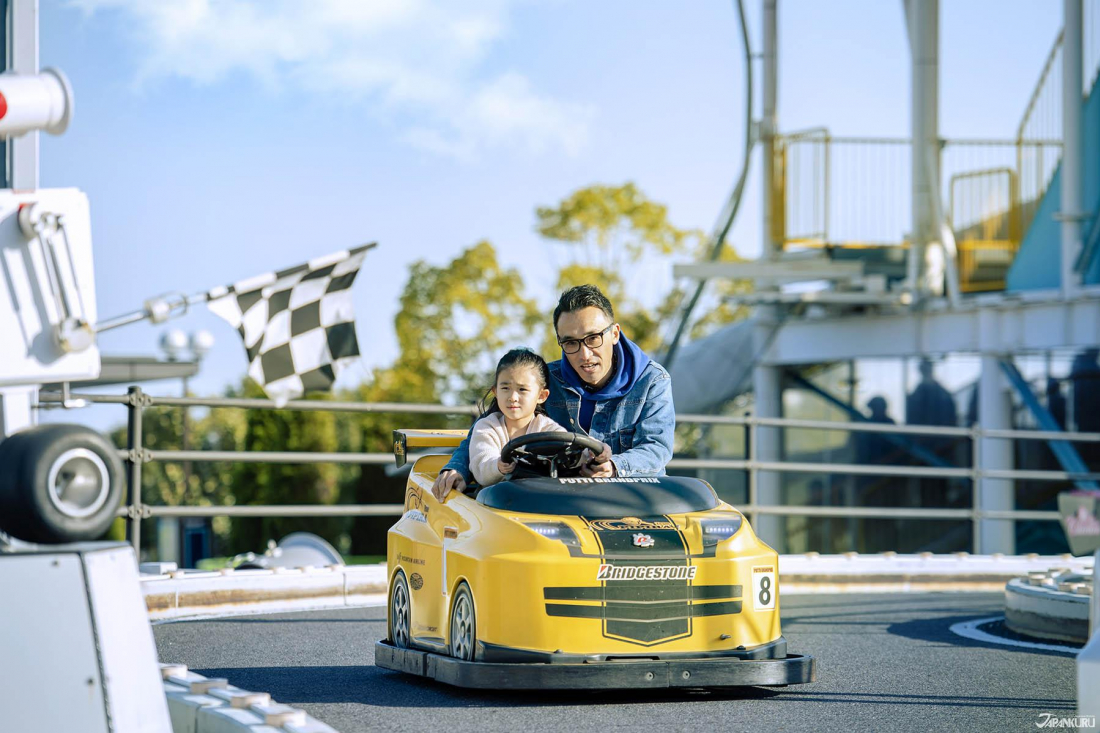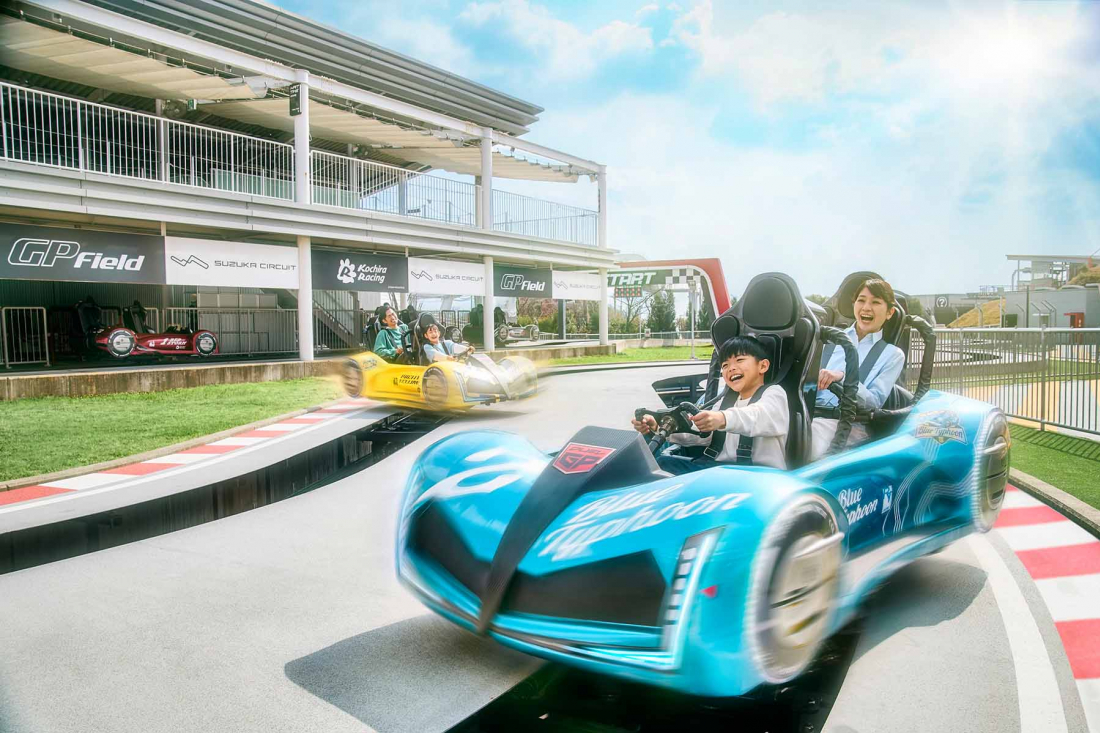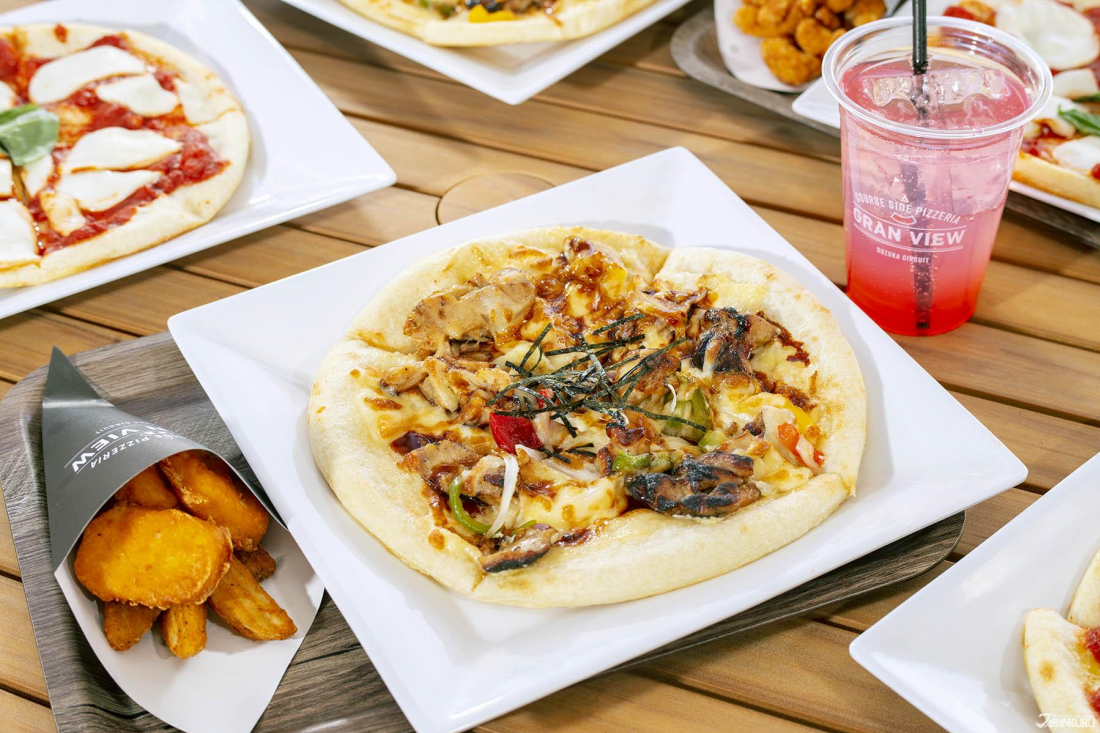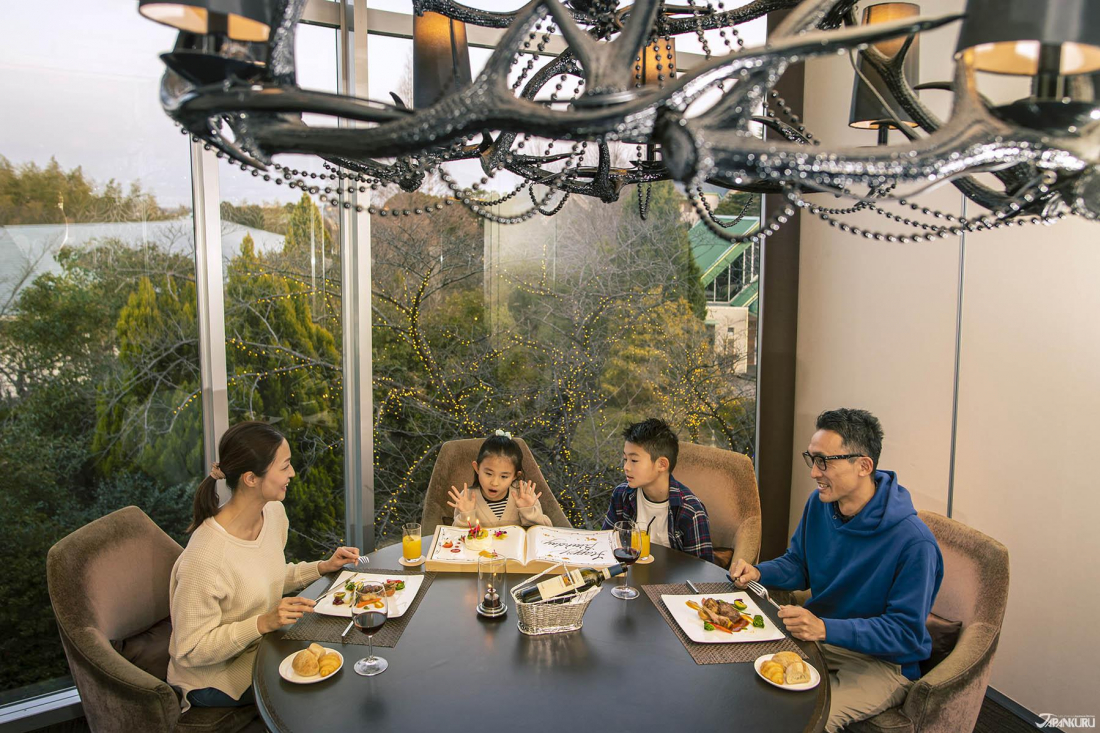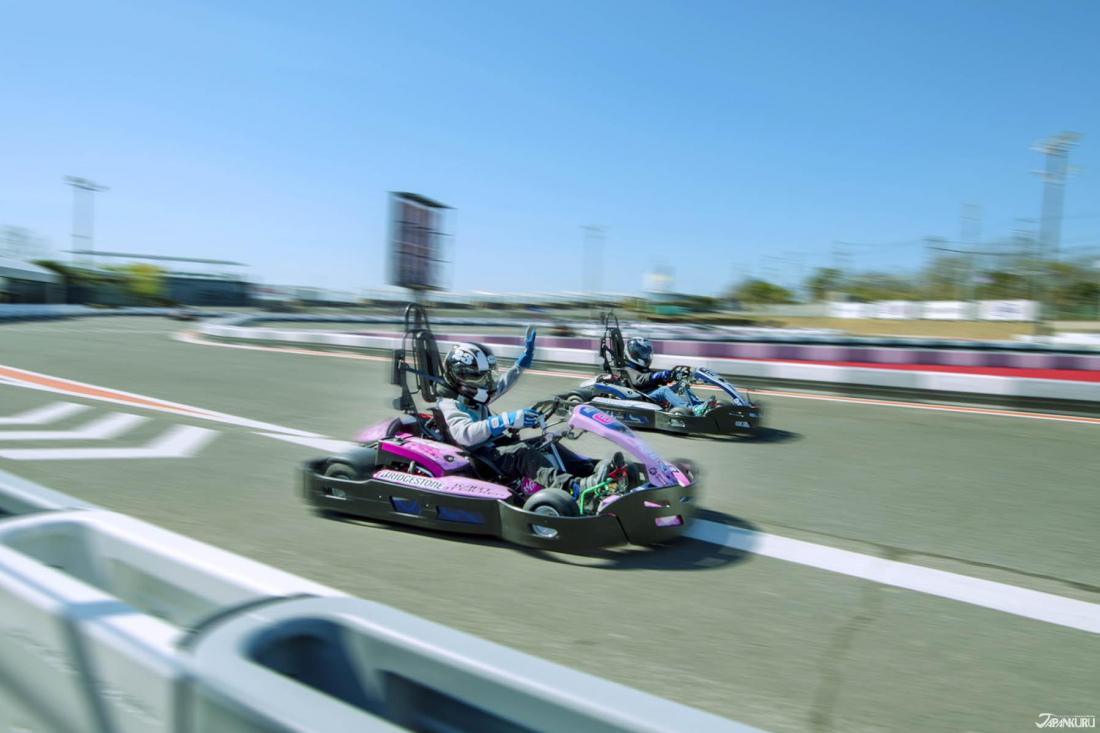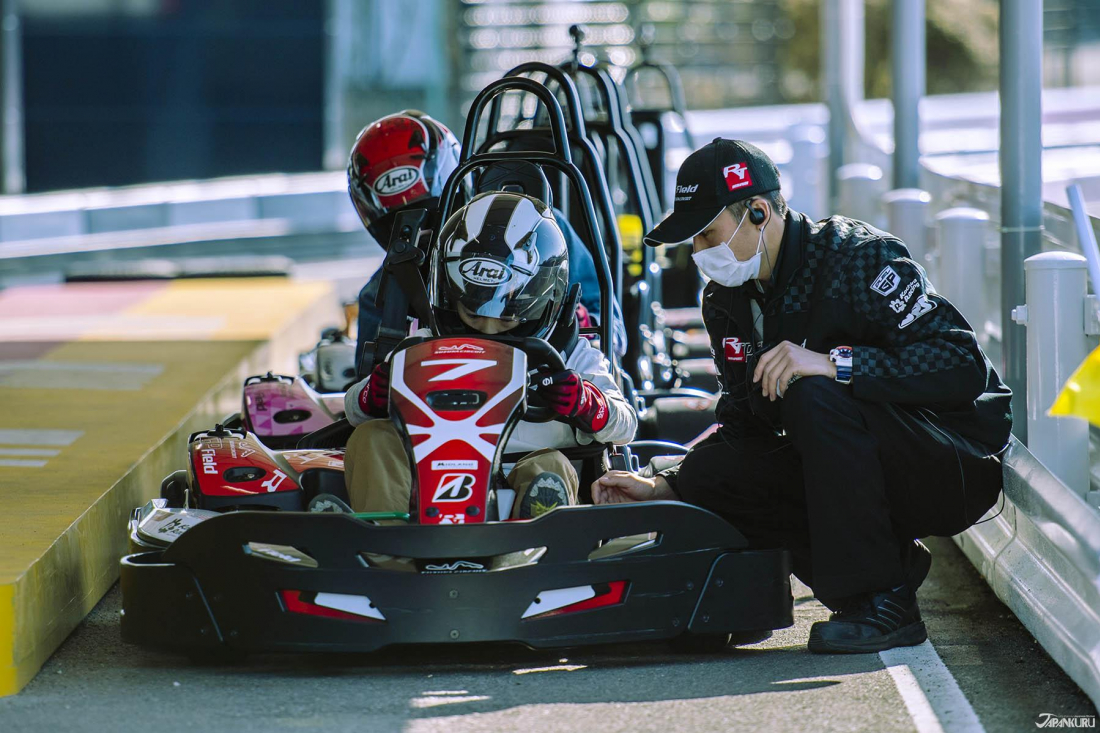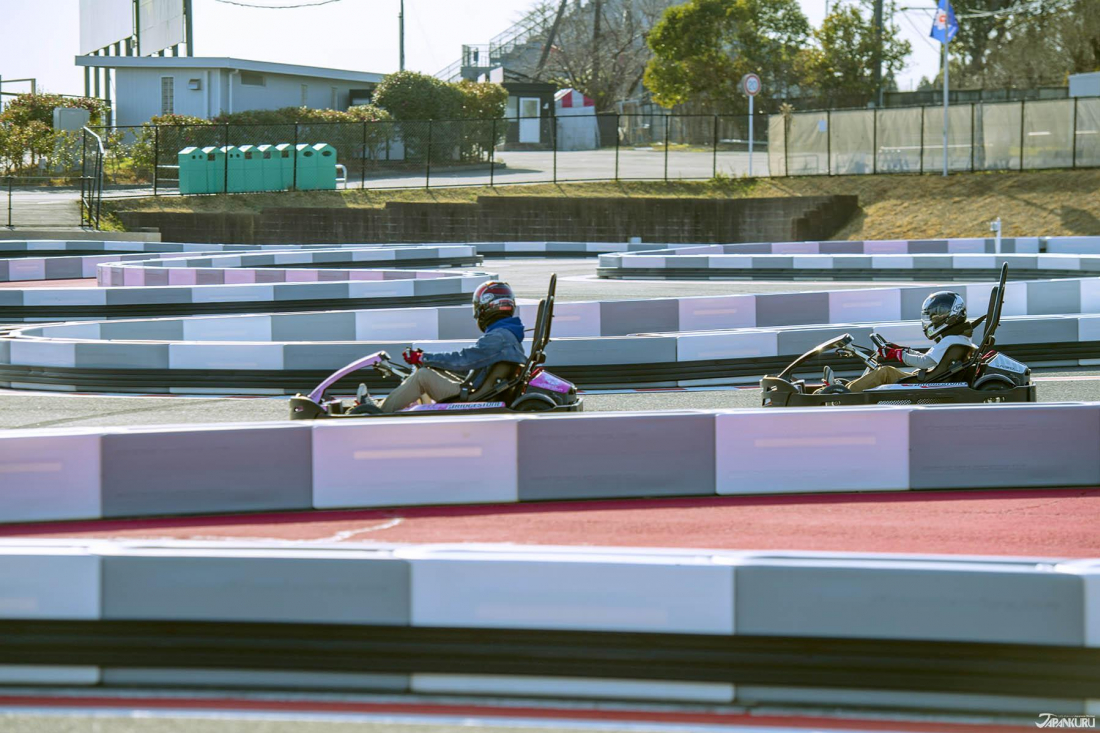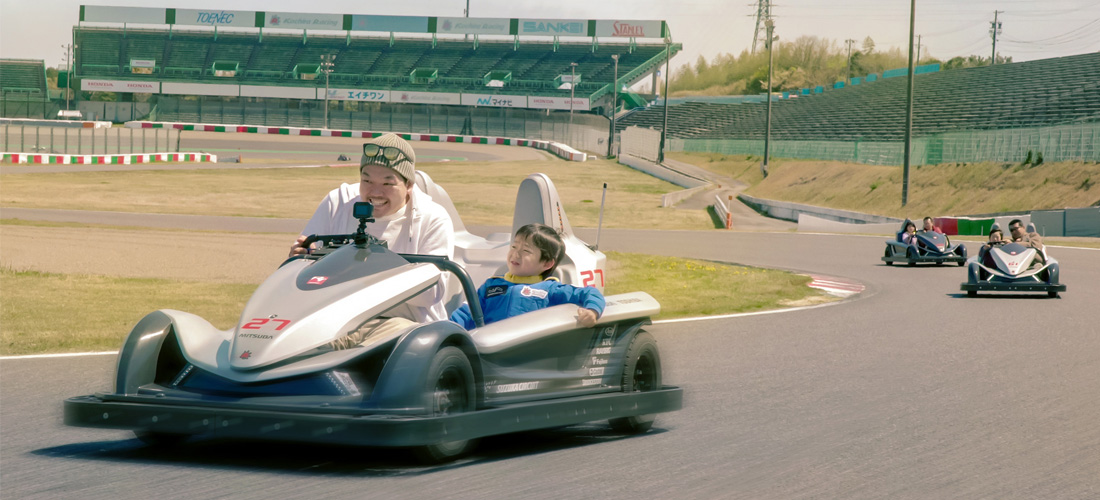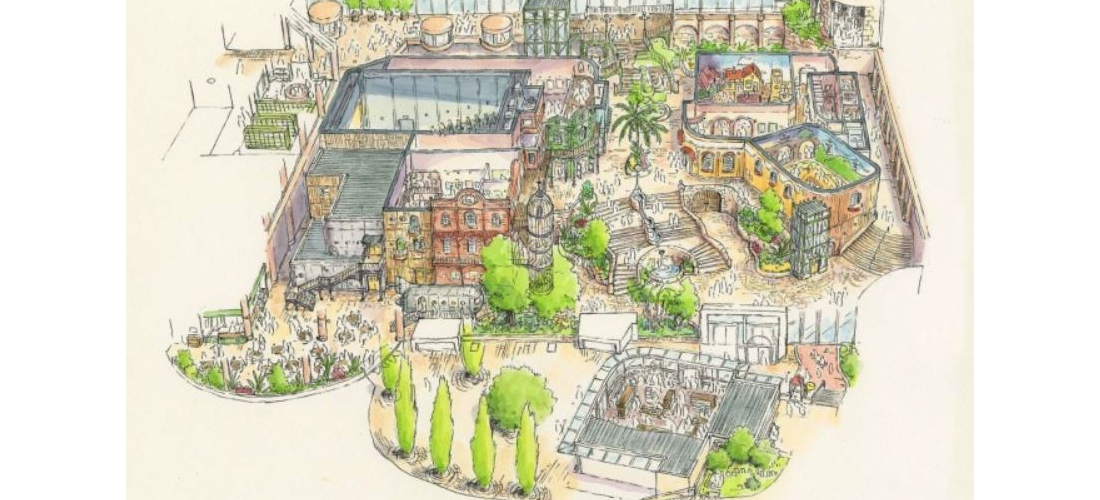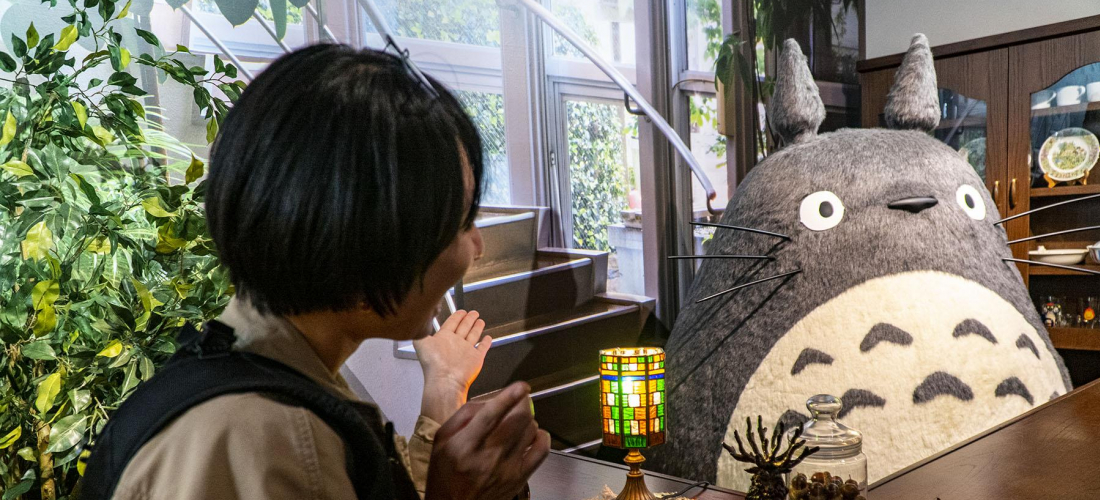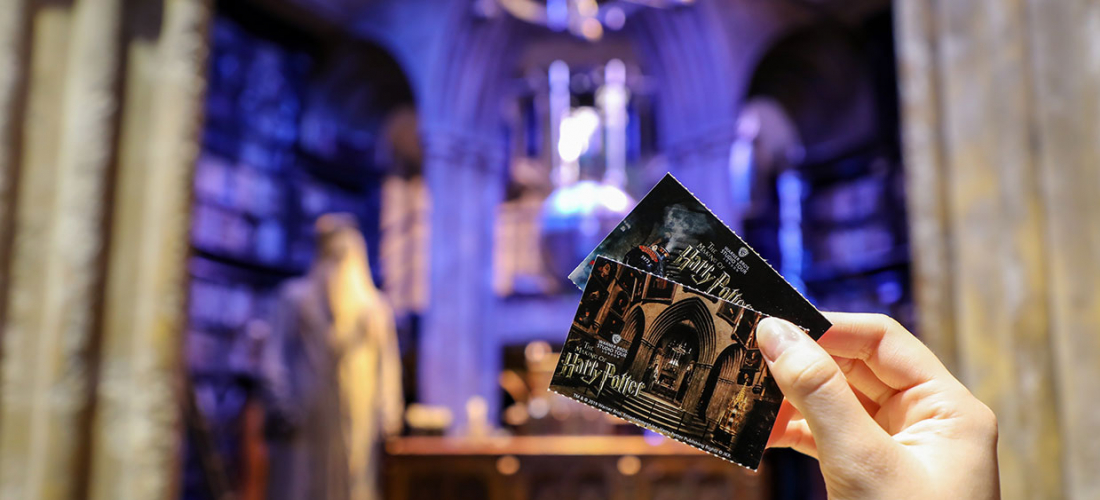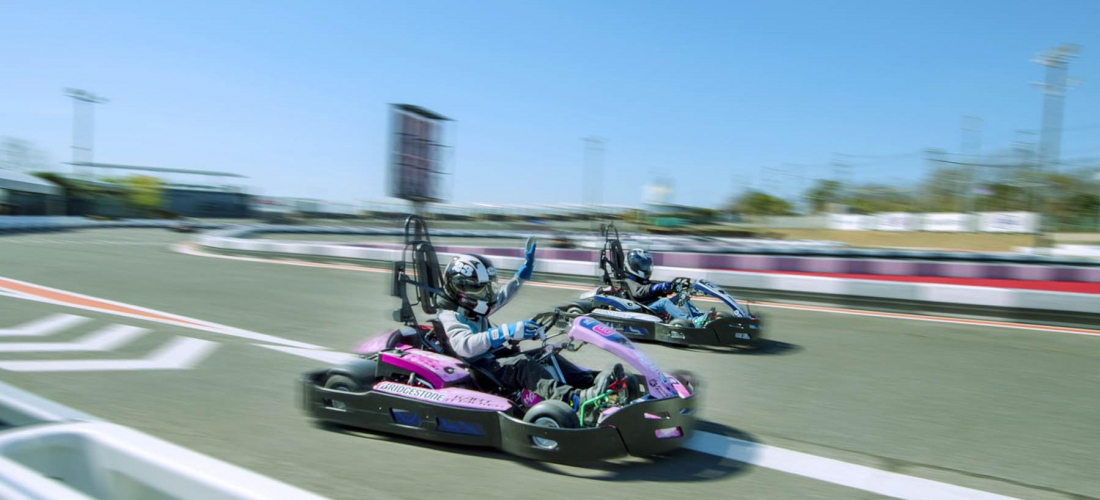
CONTENTS
Suzuka Circuit is already a beloved racetrack as host of the Formula 1 Japan Grand Prix, and the theme park’s rides and attractions are bound to create some new racetrack fans of all ages! Located near Nagoya, make the trip with friends and family to enjoy the thrills of the world of motorsports, plus hot springs, great food, and their unique hotel!
Suzuka Circuit Theme Park: Make Your F1 Racing Dreams Come True
The first full-scale standard international racing course in Japan, Suzuka Circuit was completed in 1962, and has been in use for major events ever since. Thanks to some wicked turns and unique flow, the track itself is a fan favorite in the world of Formula 1. To this day, famous racers can be seen around the course or walking over from the on-site hotel, prepping for the Formula 1 Japanese Grand Prix or the "Suzuka 8 Hours", an 8-hour endurance race for motorcyclists.
The average traveler, however, might be even more excited by the Suzuka Circuit theme park,
a mobility-themed motor sports theme park built alongside the Suzuka track in more recent years, complete with an attached hotel and onsen resort. From attractions that let you hurtle down a real racetrack in mini race cars to the feel of real racetrack wind speeds in the museum area, the attractions are made so that visitors of all ages can experience the fun of being a racecar driver.
Access: Mie Transportation bus/taxi from Shiroko Station
Official Website (en)
Ready, Set, Go, on the F1 Japan Grand Prix Racecourse
Circuit Challenger is perhaps the most iconic ride of the Suzuka Circuit theme park, offering visitors a taste of all the excitement felt on the F1 Japan Grand Prix racecourse. Suzuka Circuit teamed up with pro racer Takuma Sato (acting as project advisor) to create an attraction that lets racing fans of all ages speed along the real Suzuka racetrack for an authentic racing experience, whipping by in safe, easy-to-operate electric racing karts. Instructions are given in whatever language you're most comfortable with, so even inexperienced drivers can grab the wheel with confidence. Guests two and older can ride along, nine-year-olds can try their hand at driving, and drivers 13 and up can take a car out for a lap on their own! But it's especially fun to pile two or three people into the racecars and go around the track together.
Before heading out onto the track, each driver gets a card that can record data from the drive. Just climb into your racing kart, insert the card key, and follow the instructions from the navigation system (available in Japanese, English, and Chinese) to drive like a pro. When the race is over, you can check your score and earn a "license". On our last ride, our driving only earned a C. We'll have to work on our driving skills next time!
The First Motorcycle-Style Coaster in Japan
The F1 Japan Grand Prix isn't the only major race at Suzuka Circuit, and one look at the motorcycles that speed around the circuit is enough to get your blood pumping. If you've ever longed to hop on a motorcycle and take some turns at blinding speeds, a ride on Suzuka Circuit's GP Racers attraction is a must. Visitors of all ages can hop on GP Racers to get a real feel for the speed and g-forces of a motorcycle race, with heavy cars and tight corners that let you bank like a pro. A part of the track even loops right by the actual Suzuka Circuit, so you can see the historic racetrack that hosts the F1 Japanese Grand Prix and the Suzuka 8 Hours from high in the air as you zip past on a "motorcycle" of your own. For memories you can take home, the roller coaster's path also goes right by a viewing platform, making it easy for anyone to snap a few pictures.
The two-seater motorcycle-style cars come in six different colors with lightcycle-esque LED accents, for a design that makes them look both retro and futuristic. The ride looks and feels like you're riding a motorcycle, but thankfully the design keeps you safely in your seat while you race through the air.
Go-Karts Turn the Racetrack Mini
The "Putti Town Circuit" is a mini version of the Suzuka Circuit racecourse itself, and you can do loops around the track by joining in on the Putti Grand Prix. Kids three and older can ride, and kids seven and older can drive themselves without any help, although we still think it's extra fun to have a passenger alongside to cheer you on!
A Buzzing Hive in the Sky
Bun Bun Bee is popular among younger kids and families, but it's a nice relaxing break for park visitors of all ages. If you'd like to float through the sky carried along by friendly buzzing bees, you can sit yourself down in one of the ride's honey-yellow seats.
Nearby, the "Potager Garden" is full of giant fruit and vegetable decorations, letting kids feel like they've been shrunk to the size of a hungry bee as they explore the "Garden Maze Potagenne." Luckily, adults are allowed in to explore as well!
Pizza by the Racecourse
There are quite a few places to eat, snack, and drink around the Suzuka Circuit theme park. Stalls sell small bites like caramel corn, yakisoba, or ice cream stuffed crepes. For sit-down meals, you can head to the super-cute Bun Bun Pancake Shop, or grab some Western-style Japanese food at Putti Town Kitchen. This time, though, we decided to treat ourselves to pizza at Course-Side Pizzeria Grand View, which is built along the Suzuka Circuit for a great view of the track! There's a deck outside the restaurant, but larger groups might want to reserve private "box seats." No matter where you sit, you get a pretty good view of the racetrack, and any race cars that might be going by.
Stay the Night in Racetrack Guest Rooms
The two new rides at Suzuka Circuit are just a part of a whole racing-themed park. So if a weekend of racing sounds good, here's a glimpse of everything else Suzuka Circuit has to offer. (We wrote all about Suzuka Circuit the last time we visited, if you need more details!)
Not only does Suzuka Circuit have a whole theme park, but it also has a whole resort area with a themed hotel, restaurant, and even onsen spa facilities, which makes it especially convenient for families traveling with young kids. Originally designed to accommodate the drivers and teams that came to the racetrack for large international events, the Suzuka Circuit Hotel is now a perfect place for guests to stay after a full day at the circuit, with unique racing-themed rooms that accommodate groups of different sizes. Some of them have racetrack-style bedspreads and bucket seat chairs designed in collaboration with German automobile seat manufacturer RECARO, or bed headboards shaped like race car wheels! In the area of the hotel called THE MAIN, the "Grand Maisonette'' rooms even have a loft area with extra sleeping space.
In addition to the comfortable hotel, the restaurant space called "THE DINING" uses locally-grown ingredients from Mie Prefecture to offer a mix of Japanese, Chinese, and Western cuisine.
To soak away all the fatigue of a fun day at the theme park, try Suzuka Circuit's onsen facilities called "THE SPA." The large open baths and steaming hot water will leave you feeling refreshed and ready for another fun day in Japan!
The warm wooden structure and floor-to-ceiling windows of THE SPA offer an inviting spa retreat at the end of the day!
Plan a Trip to the Suzuka Circuit Theme Park
Suzuka Circuit is easily accessible from Nagoya, so it's easy to add a couple days at the theme park to the itinerary when traveling in central Japan. Explore the castles and temples of Nagoya, visit the explosively popular Ghibli Park, and learn a little bit about the history of Japanese cars at the Toyota Museum while you're there, then head to Suzuka to see vehicles on a whole new level – and race around the famous track!
Got any questions about planning your trip? Want to tell us about your last trip to central Japan? We'd love to hear from you on the Japankuru twitter, instagram, and facebook!
Of course, the view was great, but the pizza and Italian sodas were pretty tasty too.
Back at the hotel, there's an entire restaurant building. The natural buffet restaurant SORA・TABEYO offers seasonal dishes of all kinds, for breakfast, lunch, and dinner. Organic Café Sunpo is a quicker spot for lunch or an afternoon snack, with organic hamburgers and hand-made pastries (try the honey roll cake)! SHUN, a premium grill and bar (pictured above) is the place for a nicer dinner or a special celebration in chic surroundings. You might just see the chefs perform a flashy show, or you can reserve a room for a swanky, private family dinner.
Kart Attacker takes classic go-karts to a new level, as only a Formula 1 racetrack could. Drivers suit up in helmets and strap into racecar-style karts, with adjustable steering wheels and pedals, before racing to the front of the pack. Each driver is timed, so families and friends can challenge each other and work together to shave off seconds and set new self records. There are even rentable intercoms that let you talk with any racing partners while you're driving.
Driving in the Attack Stage, the max speed of the kart is upped to around 35km/hr (22mph), so it gets pretty fast! Going at that speed, you can try for an S license – under 25 seconds!
Food: Lunch With a View
Details
NAME:Suzuka Circuit (鈴鹿サーキット)
ACCESS:Shiroko Station
PROFILE
Follow us @Japankuru on Facebook, Instagram, and Twitter!
COMMENT
FEATURED MEDIA
VIEW MORE
・Accommodations for Odaiba Sightseers: Mitsui Garden Hotel Toyosu PREMIER ・住宿推薦 三井花園飯店 豐洲普米爾 ・오다이바 관광 맞춤 숙소: 미츠이 가든 호텔 토요스 프리미어 ・ค้างคืนที่ Mitsui Garden Hotel Toyosu Premier โรงแรมสำหรับผู้มาเยือน Odaiba #japankuru #odaiba #tokyo #tokyotrip #japantrip #japantravel #mitsuigardenhotel #mitsuigardenhoteltoyosupremier #tokyohotel #odaibahotel #toyosu #tokyoview #tokyobay #rainbowbridge #미츠이가든호텔토요스프리미어 #오다이바 #오다이바맛집 #오다이바건담 #오다이바해변공원 #오다이바야경 #오다이바온천

Nagano Prefecture is famous for delicious soba noodles, and in the city of Ueda, you can learn from the experts! Local aunties run this cooking class, teaching you everything you need to know to make your own delicious plate of soba noodles entirely from scratch. #japankuru #soba #sobanoodles #japanesefood #travelexperience #japan #japantrip #ueda #nagano #japaneseculture #japanexperience #daytrip #daytour #cookingclass #japanesecookingclass #上田市 #そば作り #소바체험 #우에다시 #나가노여행 #일본소바

Kuramae Shrine is known for its early-blooming cherry blossoms and its gorgeous golden mimosa blooms, making it a great sakura spot for travelers arriving in Tokyo a little early for the main cherry blossom season. It’s also tucked away in a neighborhood packed with trendy cafes and coffee shops. Kuramae is a lovely place to spend the day. 🌸☕️ ・ #japankuru #kuramaeshrine #kuramae #tokyo #tokyotrip #cherryblossom #cherryblossoms #mimosa #tokyocherry #花見 #蔵前神社 #ミモザ #桜 #東京 #Japan #日本 #일본 #Japon #ญี่ปุ่น #Japão #Japón #япония #japantravel #日本旅行 #日本旅遊 #일본여행 #japan_of_insta #japantrip #traveljapan

Local Japanese Favorites at the Okinawa Don Quijote ② Ohta’s Isan, the digestive aid of the Japanese people ・ ・ 2024唐吉訶德不可不知的好物推薦② 日本國民消化小幫手:太田胃散 ・ ・ 오키나와 돈키호테 숨은 꿀템2. 일본 국민 소화제! 오타이산 #japankuru #okinawa #donki #沖縄 #오키나와 #오키나와여행 #오키나와돈키호테 #일본쇼핑리스트 #오타이산 #일본소화제 #太田胃酸 #ohtasisan

Happy Valentine's Day from the Japankuru team! May your day be full of sweet chocolates and sweet nothings. 💕 Or, if you're like a rising number of women in Japan, take the opportunity to treat yourself! 🍫💝💆 • Find out more at Japankuru.com! (Link in bio.) • #japankuru #valentinesday #valentineschocolate #japanesechocolate #japaneseculture #バレンタイン #バレンタインチョコ #メリーチョコレート #Japan #日本 #일본 #Japon #ญี่ปุ่น #Japão #япония #japantravel #日本旅行 #日本旅遊 #일본여행 #japan_of_insta #japantrip #traveljapan #japan🇯🇵 #japanlife #igerstokyo #explorejapan #japanfocus #enjoyjapan #japantravelphoto

Japankuru Coupon: BEAMS fashion, accessories, lifestyle goods, and more! BEAMS 5% Discount Coupon ▶︎ Validity Dates: February 1 ~ February 29, 2024 ▶︎ Discount: 5% off all products in-store ▶︎ Usable At: BEAMS stores throughout Japan (all stores except BEAMS JAPAN Izumo and BEAMS JAPAN Nikko) ▶︎ Details: Please present this coupon page before payment to receive your discount! This coupon is also valid in combination with tax-free discounts/refunds for foreign tourists. (Tax-free shopping is only available at some BEAMS locations.) Some products may not be eligible for discount. ・ ・ ・ BEAMS - JAPANKURU優惠折扣券 BEAMS 2024年2月限定特別優惠券 店內全部商品95折 ▶︎使用期間:2024/2/1到2024/2/29 ▶︎使用範圍:日本全國店舖 ▶︎使用方法:結帳時請務必事先向店員出示本優惠券,若未出示本優惠券恕無法享有本優惠。本優惠券可搭配免稅優惠一併使用,但不排除特定門市無法使用本優惠券。此外,不排除特定商品不適用本優惠券。 ・ ・ ・ 「빔즈(BEAMS) x 재팬쿠루(JAPANKURU)」스페셜 할인 쿠폰 빔즈(BEAMS) 5% 할인 쿠폰 ▶유효기간: 2024년 2월 1일 ~ 2월 29일(한 달 동안) ▶︎할인율: 매장 내 전 상품 “5% 할인" ▶︎해당 매장: 일본 전국 빔즈 (BEAMS) 매장 (BEAMS JAPAN이즈모、BEAMS JAPAN닛코는 쿠폰 할인 대상 제외 점포입니다) ▶︎상세 내용: 결제 전 본 쿠폰 페이지를 제시하면 정가대비 5% 할인된 금액에 구매하실 수 있습니다! 본 쿠폰은 외국인 관광객들을 대상으로 하고 있으므로 면세 혜택(빔즈 일부 매장)과 별도로 추가 할인이 가능합니다. (일부 매장 및 제품은 대상에서 제외될 수 있습니다.) #japankuru #beams #beamsjapan #beamsginza #coupon #재팬쿠루 #빔즈재팬 #빔즈 #일본여행 #일본쇼핑 #일본쇼핑리스트 #銀座 #東京 #tokyoshopping #japankurucoupon

